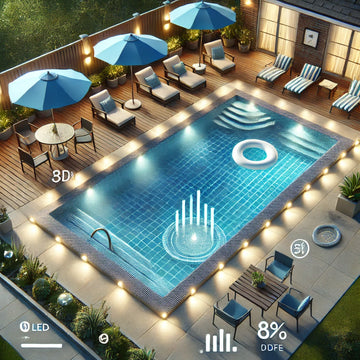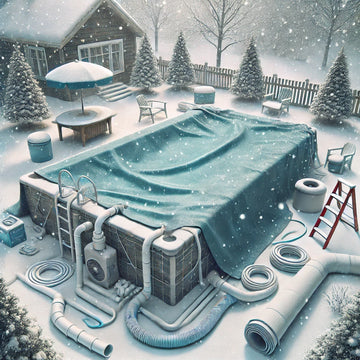BASIC TIPS FOR IN-GROUND POOL LEAK DETECTION HELPS ENSURE THAT YOUR POOL FUNCTIONS AT ITS BEST
Your backyard is an area where you want everything to look just right so that you can relax and be comfortable. If you have an in-ground pool you know that the chemical level in the pool needs to be balanced. But do you know about in-ground pool leak detection? There are a number of ways you can find out of your pool is leaking and if you need an in-ground pool liner repair.
A CRACKED LINER:
Although it is difficult to create holes in a vinyl liner, they can still happen. For minor cracks or holes in the liner, an underwater vinyl patch kit can be used for in-ground pool liner repair. Your Ottawa pool specialist can advise you on the best way to repair a cracked liner.
WINTERIZING YOUR POOL:
When it comes time to close down your pool for the winter, it is important that this is done properly. Getting your pool ready for the winter includes, among several other steps, shutting off all pumps, ensuring the PH levels are properly balanced for freezing temperatures, and covering up the pool past the edges. When your pool is properly taken care of for the winter, there is a reduced risk for in-ground pool liner repair.
CRACKS IN THE POOL’S STRUCTURE:
For in-ground pool leak detection, look for cracks around your in-ground pool’s structure. The land around your pool might be shifting or there may be a sinkhole not too far from your pool. Your Ottawa pool specialist can tell you more if you decide to have your pool evaluated. An in-ground pool liner repair might be in order if the damage is increasing over time.
LEAKING WATER PUMPS:
Another in-ground pool leak detection method is to check for leaks in the water pumps. If water is leaking here this may cost you more on your water bill as well as in chemicals, if the PH balance is unstable because of unwanted leaks.
IN-GROUND POOL LEAK DETECTION TEST – THE BUCKET TEST:
The bucket test is to check for leaks in your in-ground pool. Take a bucket of water and fill it up so the level matches the level of water when you place it on the first step of your pool. Mark with a black marker both inside and outside, where the respective levels of water are. Then, turn your pool off and let the bucket sit for 24 to 48 hours. Once you’ve waited for some time, and you see that the pool water level is under its original mark, you have yourself a leak. Return lines and skimmer lines are where many leaks occur. Place a rubber plug on all return jets, and wait to see if the water level changes or not on your bucket. You can also try this same procedure on the skimmer suction holes with rubber plugs. If the water level stays the same, this is where your leak is likely occurring.




